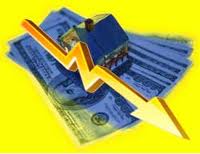With the ongoing housing recovery unfolding in various regional markets across the United States, many house hunters are concerned about hastening their real estate transaction in the hopes that they will get in at the right time.
 With the ongoing housing recovery unfolding in various regional markets across the United States, many house hunters are concerned about hastening their real estate transaction in the hopes that they will get in at the right time. The investing adage "timing is everything" seems to rush home shoppers through the mortgage process, and this in turn can end up costing them more than it should.
With the ongoing housing recovery unfolding in various regional markets across the United States, many house hunters are concerned about hastening their real estate transaction in the hopes that they will get in at the right time. The investing adage "timing is everything" seems to rush home shoppers through the mortgage process, and this in turn can end up costing them more than it should.
While the mortgage market has definitely come a long way in terms of consumer protection, it is still a marketplace where products are priced according to demand, eligibility and profit margin. Getting a mortgage is clearly more difficult now than it was in the halcyon days of the housing market prior to 2008, but this does not mean that applicants should refrain from shopping around.
Sneaky Closing Costs Still Abound
In a recent New York Times article reprinted by CNBC, Paul Sullivan spoke to borrowers about how Good Faith Estimates (GFEs) are still not elucidative when it comes to closing costs. One of the borrowers complained that the GFE simply lumps together a bunch of fees while ignoring others.
Mortgage brokers and lenders are not usually too competitive in terms of pricing their fees. They have profit margins to keep, and to this end borrowers should expect to see greater differences in origination fees and discount points that can be paid upfront with cash in some cases. To a lesser degree, title insurance rates will also vary.
An alternative would be a mortgage with no closing costs and no fees. Lenders and brokers are not required to explicitly offer these products, but mortgage applicants can certainly ask for them and do a bit of comparison shopping., There is a catch, however, with these no-closing costs mortgages: They are likely to cost more over the life of the loan.
With mortgage interest rates at record lows, home loans with zero closing costs are bound to become popular. Borrowers should expect to close at higher-than-average annual percentage rates (APRs) with these home loans, but they could still be attractive to many. It is important for borrowers to remember that they can still purchase discount points upfront and that they should always lock their rates.
Imagining a Better GFE
At four pages long, current GFEs offer a lot more information than they used to. This is not necessarily better for first-time home buyers or rookie real estate investors, and to this end an economics professor from the University of Chicago argues that GFEs should be made available in electronic form. The idea is that borrowers should be able to compare every single item on the GFE, not just the bottom line.
A proposed solution would be print the GFE with a QR code that applicants can scan in lieu of a fully-electronic version. The idea is to make the mortgage lending process as borrower-centric as possible, and to this end applicants should be able to comparison-shop every item of their home loans.



